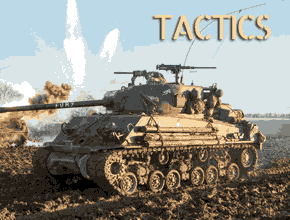The Australian self-propelled howitzer "Yeramba" was developed in 1948, produced by mounting the 25 pounder gun-howitzer on an American M3A5 Grant tank hulls converted by the Ordnance Factory in Bendigo, from 1950 to 1952. The Yeramba was very close in design to the Canadian Sexton and withdrawn from service in 1957, now obsolete compared to newly serviced self propeller howitzers. It remained the only self-propelled artillery introduced into service by the Australian Army before the introduction of the M108. "Yeramba" was a an Aboriginal instrument used to throw spears.

Prototype
However, it was determined to modify a few M3 Grant tanks for the purpose because contemporary self-propelled artillery could not be bought from abroad. Despite being formally known as "Ordnance, Quick Firing, 25 pdr Mark 2/1, on Mounting Self propelled 25 pdr (AUST) Mark 1, on Carrier, Grant, Self Propelled 25 pdr (AUST) Mark 1", the term Warragal was suggested as a replacement for this unwieldy nomenclature in everyday speech. This was turned down, and the official short name "SP 25 pounder Yeramba" was adopted in January 1951.
Only 40 degrees of elevation and 9.5 degrees of depression were permitted. The M3 type bogies were swapped out for the more durable M4 Sherman suspension components. 16 armour-piercing (AP) rounds and 88 high explosive and/or smoke shells were stowed. The gun used the same sighting equipment as the towed field gun, which allowed for both direct and indirect laying, and the 25-pounder and a reinforced saddle were placed on a bolster-and-beam system welded to the track sponsons.
This conversion was performed on 14 automobiles in total. Similar to many M3 medium tanks in Australia, the Yerambas typically had an extra cast armour plate installed over the transmission housing and final drives on the nose of the vehicle. This plate was between 38 and 44 mm thick. Between 1950 and 1952, the 22nd Field Regiment, Royal Australian Artillery, stationed at Puckapunyal, received all of the Yerambas that were built. After that, the regiment was given AFV crewman's rubberized canvas soled boots and the Royal Australian Armoured Corps black beret with the Royal Australian Artillery cap emblem. But in 1957, it was dissolved, and the Yerambas were disposed of after being deemed outdated. They were never operationally utilized. Although they required a lot of labor to maintain, the crews thought the Yeramba was an excellent weapon.
Consequently, in July 1949, approval to convert one Grant to an SP 25 pr was given. Canadian Sexton SP drawings were obtained and provided the basis for the local design, which was a Grant M3A5 chassis with the turret and much of the frontal armour replaced by an open-topped fighting compartment. The driver’s position and controls were moved down and to the right within the vehicle. The 25-pounder ordnance and a strengthened saddle were mounted on a bolster-and-beam assembly welded to the track sponsons. The gun was equipped with the same sighting gear as the towed field gun, which allowed for both direct and indirect laying.
The 25-pounder gun uses separate ammunition, so the normal loading was 102 standard cartridges and 16 super cartridges, along with 88 mixed High Explosive and smoke projectiles and 16 Armour Piercing Shot projectiles. The prototype underwent user and firing trials at Puckapunyal in December 1949. It was then returned to Monegeeta for modifications and completion of the stowage arrangements. Following general acceptance authorisation was given in February 1950 to convert another 13 tanks to SP mountings. The first of these was completed in November 1950 and the last delivered in August 1952. Including the prototype, fourteen vehicles were converted.
While officially introduced into service as "Ordnance QF 25-pounder Mk2/1 on Mounting Self Propelled 25 Pounder (Aust) Mk1 on Carrier, Grant, SP 25 Pounder (Aust) Mk1", the name "Warragal" was proposed to replace this awkward nomenclature in general use. This was unacceptable, however, and in January 1951, the name "Yeramba", an instrument for throwing spears, was accepted as the official short name. Only 22 Field Regiment was eventually equipped with the Yeramba. The Regiment was highly enthusiastic about its equipment and unique role of being self propelled. With a name change to 22 Field Regiment (Self Propelled), personnel also adopted the Armoured Corps black beret resplendent with RAA cap badge, and were issued with AFV crewman’s rubberised canvas soled boots.
Despite the gruelling labour associated with maintaining the tracked Yeramba, it was considered a very good weapon by its crews. Their pride in being the only SP regiment in the Australian Army was short lived, however, as the Yeramba was declared obsolete in 1956. The unit was disbanded in 1957. It still remains the only SP field artillery weapon that Australia has officially introduced into service. Source: defence.gov.au blog article "Remember when ... we had self propelled artillery?" by Mike Cecil, Head of Military Heraldry and Technology, Australian War Memorial, published in May 2009.
Design of the Yeramba

Prototype
Development
The Australian Regular Army was established in 1947 as part of the defense program, and many new armored formations, like the 2nd Armoured Brigade Group, were part of the plans for a permanent field force. Royal Australian Artillery's 22nd Field Regiment was assigned to this stand-alone brigade. The need for artillery units in armored brigades to have the same mobility and protection as the tanks they supported was one of the lessons learned from the European War, and as a result, a program to acquire a self-propelled gun was started.However, it was determined to modify a few M3 Grant tanks for the purpose because contemporary self-propelled artillery could not be bought from abroad. Despite being formally known as "Ordnance, Quick Firing, 25 pdr Mark 2/1, on Mounting Self propelled 25 pdr (AUST) Mark 1, on Carrier, Grant, Self Propelled 25 pdr (AUST) Mark 1", the term Warragal was suggested as a replacement for this unwieldy nomenclature in everyday speech. This was turned down, and the official short name "SP 25 pounder Yeramba" was adopted in January 1951.
General Layout
Drawings for the Canadian Sexton self-propelled 25 pounder, which was also based on the M3 chassis, were acquired and modified. An open-topped fighting chamber was used in place of the Grant's turret and most of its frontal armor. Within the car, the controls and driver's position were shifted to the right and down. In fact, the forward hull, sponson-mounted 75 mm (3 in) gun, and 37 mm (1.5 in) turret were replaced with a new welded, open-topped superstructure. The cannon could travel over a 40 degree arc thanks to a QF 25 pounder Mk 2/1 that was positioned in the center of the superstructure and had a 20 in (510 mm) fixed length recoil system and a muzzle brake.Only 40 degrees of elevation and 9.5 degrees of depression were permitted. The M3 type bogies were swapped out for the more durable M4 Sherman suspension components. 16 armour-piercing (AP) rounds and 88 high explosive and/or smoke shells were stowed. The gun used the same sighting equipment as the towed field gun, which allowed for both direct and indirect laying, and the 25-pounder and a reinforced saddle were placed on a bolster-and-beam system welded to the track sponsons.
Production and Service
The conversion of one Grant to the self-propelled configuration was approved in July 1949, and in December 1949, the prototype was put through fire and user testing at Puckapunyal. After that, it was brought back to the factory to finish the stowage arrangements and make any necessary adjustments. Authorization to convert an additional 13 Grants to Yerambas was granted in February 1950 after the Army's broad approval. November 1950 saw the completion of the first of these changes, and August 1952 saw the delivery of the last. Since the 2nd Armoured Brigade continued to utilize the Grant tank and the 25-pounder field cannon as the standard field artillery weapon in use, standardization was one advantage of the change. Additionally, it was the least expensive option.This conversion was performed on 14 automobiles in total. Similar to many M3 medium tanks in Australia, the Yerambas typically had an extra cast armour plate installed over the transmission housing and final drives on the nose of the vehicle. This plate was between 38 and 44 mm thick. Between 1950 and 1952, the 22nd Field Regiment, Royal Australian Artillery, stationed at Puckapunyal, received all of the Yerambas that were built. After that, the regiment was given AFV crewman's rubberized canvas soled boots and the Royal Australian Armoured Corps black beret with the Royal Australian Artillery cap emblem. But in 1957, it was dissolved, and the Yerambas were disposed of after being deemed outdated. They were never operationally utilized. Although they required a lot of labor to maintain, the crews thought the Yeramba was an excellent weapon.
The point of Mike Cecil
The immediate post war period saw Australian Army interest in self propelled (SP) artillery. Three armoured formations had recently been created, emphasising the need for artillery with a similar degree of mobility to the tanks. Sufficient M3A5 Grant tanks and 25 pr field guns were available within Australia for conversion to an interim SP mounting suitable for training purposes. The local conversion would also maintain local standardisation, since the Grant tank was still used by the Victorian-based 2nd Armoured Brigade, and the 25 pr field gun was still the standard field artillery equipment. It was also the cheapest alternative.Consequently, in July 1949, approval to convert one Grant to an SP 25 pr was given. Canadian Sexton SP drawings were obtained and provided the basis for the local design, which was a Grant M3A5 chassis with the turret and much of the frontal armour replaced by an open-topped fighting compartment. The driver’s position and controls were moved down and to the right within the vehicle. The 25-pounder ordnance and a strengthened saddle were mounted on a bolster-and-beam assembly welded to the track sponsons. The gun was equipped with the same sighting gear as the towed field gun, which allowed for both direct and indirect laying.
The 25-pounder gun uses separate ammunition, so the normal loading was 102 standard cartridges and 16 super cartridges, along with 88 mixed High Explosive and smoke projectiles and 16 Armour Piercing Shot projectiles. The prototype underwent user and firing trials at Puckapunyal in December 1949. It was then returned to Monegeeta for modifications and completion of the stowage arrangements. Following general acceptance authorisation was given in February 1950 to convert another 13 tanks to SP mountings. The first of these was completed in November 1950 and the last delivered in August 1952. Including the prototype, fourteen vehicles were converted.
While officially introduced into service as "Ordnance QF 25-pounder Mk2/1 on Mounting Self Propelled 25 Pounder (Aust) Mk1 on Carrier, Grant, SP 25 Pounder (Aust) Mk1", the name "Warragal" was proposed to replace this awkward nomenclature in general use. This was unacceptable, however, and in January 1951, the name "Yeramba", an instrument for throwing spears, was accepted as the official short name. Only 22 Field Regiment was eventually equipped with the Yeramba. The Regiment was highly enthusiastic about its equipment and unique role of being self propelled. With a name change to 22 Field Regiment (Self Propelled), personnel also adopted the Armoured Corps black beret resplendent with RAA cap badge, and were issued with AFV crewman’s rubberised canvas soled boots.
Despite the gruelling labour associated with maintaining the tracked Yeramba, it was considered a very good weapon by its crews. Their pride in being the only SP regiment in the Australian Army was short lived, however, as the Yeramba was declared obsolete in 1956. The unit was disbanded in 1957. It still remains the only SP field artillery weapon that Australia has officially introduced into service. Source: defence.gov.au blog article "Remember when ... we had self propelled artillery?" by Mike Cecil, Head of Military Heraldry and Technology, Australian War Memorial, published in May 2009.
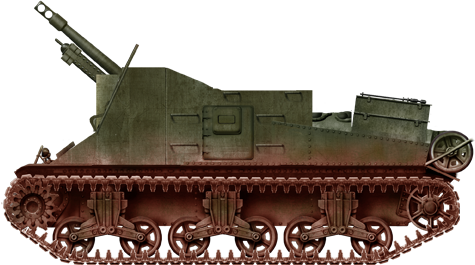
Author's rendition
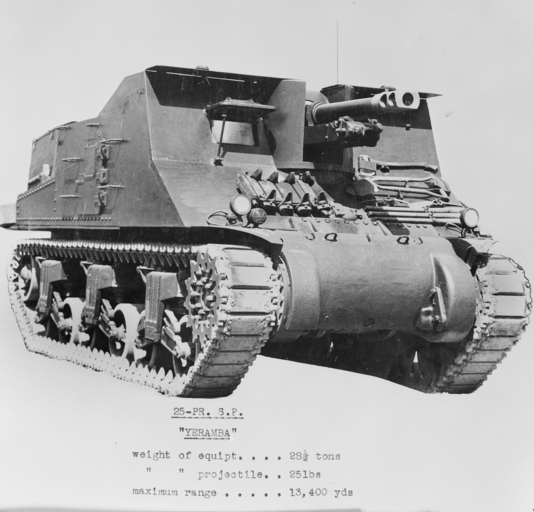
Official Doc.

AMW photo
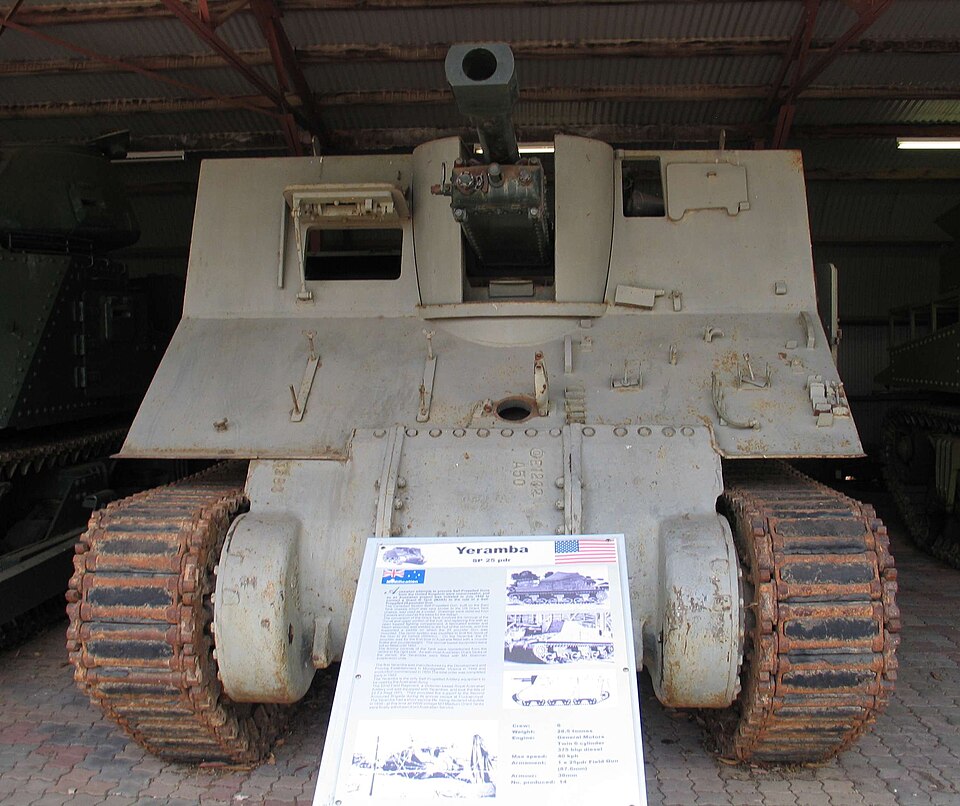
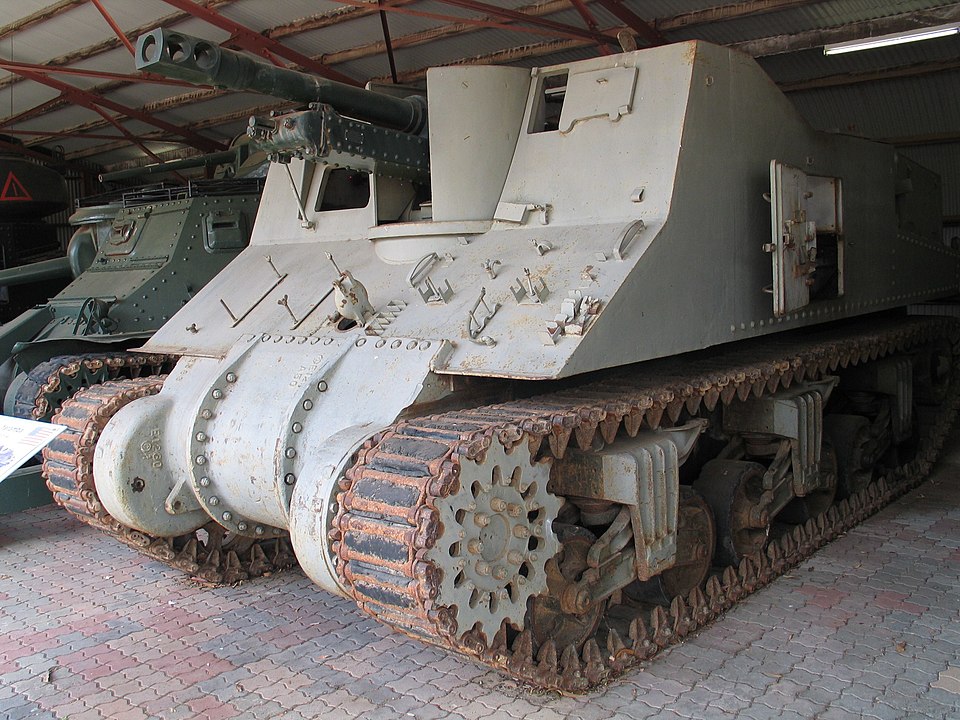
At Puckapunyal Museum
Sources/Read More
Cecil, Mike (2009). "Remember when... we had self propelled artillery?". On Target Magazine – May 2009.Horner, David (1995). The Gunners: A History of Australian Artillery. St Leonards: Allen and Unwin.
en.wikipedia.org
anzacsteel.hobbyvista.com
ww2incolor.com
defence.gov.au
shadock.free.fr
awm.gov.au

Cold War Tanks


































Cold war tanks posters

Cold War Main Battle Tanks

Cold War Soviet Army
